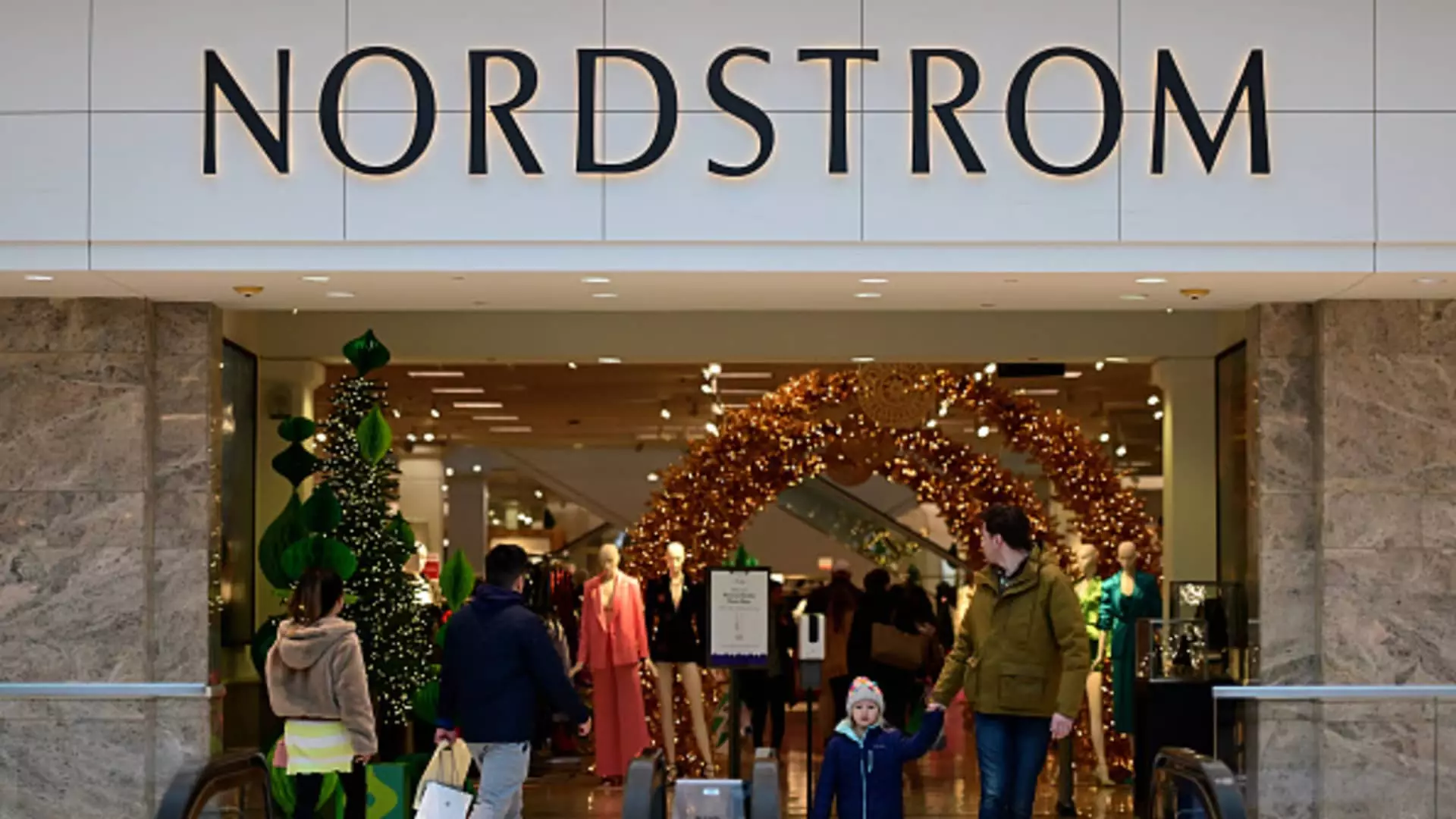Nordstrom, one of the leading department store operators, recently reported a nearly 7% decline in sales year over year. This decline is reflective of the broader trend observed in the retail industry, signaling weaker demand and financially constrained consumers. Despite the challenging circumstances, Nordstrom has maintained its full-year sales outlook, projecting a decline of 4% to 6% compared to the previous year. Nordstrom’s adjusted earnings per share forecast has also been revised slightly, with expectations of $1.90 to $2.10, excluding the impact of winding down its stores and online business in Canada, as well as any potential share buybacks. In this article, we will delve into Nordstrom’s performance in the fiscal third quarter and analyze how it aligns with industry projections and the company’s ongoing efforts.
In the three-month period ending October 28th, Nordstrom’s net income surged to $67 million, or 41 cents per share, compared to a loss of $20 million, or 13 cents, in the same period of the previous year. This improvement can be attributed to the company’s cultural shift to prioritize growth after three consecutive years of stagnant sales. However, Nordstrom failed to capitalize on the significant sales gains observed by other retailers during the COVID-19 pandemic, as it primarily caters to a higher-end market that suffered from reduced consumer spending.
Nordstrom has faced multiple challenges in an increasingly volatile retail landscape. Firstly, the decline in sales can be partially attributed to shoppers’ changing priorities, with a shift away from discretionary goods like clothing to experiences such as concert tickets. This shift has been exacerbated by the ongoing impact of the pandemic. Furthermore, other retailers have also reported softer sales and expressed caution regarding the upcoming holiday season.
Nordstrom has responded to these challenges by implementing various strategies to stimulate growth. One notable initiative involves expanding its off-price stores, Nordstrom Rack, and revamping the merchandise offerings to highlight popular brands. However, the success of these efforts has been mitigated by the current environment, with shoppers displaying a reduced inclination to make discretionary purchases. Despite this, Nordstrom has made progress in certain areas. The company has recorded lower markdowns compared to the previous year, and the inventory has decreased by nearly 9% year over year.
Despite encountering soft customer traffic, Nordstrom has managed to increase the average order size. To drive more store and website visits, the company has introduced enticing rewards for beauty purchases and expanded free two-day delivery to additional markets. However, these efforts have not entirely compensated for the decline in sales, as digital sales have decreased by 11.3% compared to the previous year. Nordstrom attributes this decline to the elimination of in-store fulfillment for Nordstrom Rack digital orders, but it has been partially offset by the fiscal third quarter inclusion of the company’s Anniversary Sale.
Although Nordstrom is facing numerous obstacles, it has noted several positive trends. Chief Brand Officer Pete Nordstrom highlighted that most of the retailer’s categories experienced stronger performances in the third quarter compared to the second quarter. Beauty remains a top driver of visits to Nordstrom, but accessories and activewear-related merchandise have also exhibited impressive sales growth. Notable brands such as New Balance and Hoka have seen increased support from consumers, particularly in the footwear sector.
Nordstrom continues its journey towards higher sales, enhanced profitability, and proficient cost management. While the company acknowledges the underlying complexity of the economic landscape, which includes factors like inflation, higher interest rates, and the resumption of student loan repayments, it remains cautiously optimistic about the holiday season. Ultimately, Nordstrom is navigating through a challenging period for the retail industry as it aims to overcome declining sales and cater to the evolving needs and preferences of its consumer base.
Nordstrom’s recent decline in sales reflects the prevailing challenges faced by retailers amidst weaker demand and cautious consumer spending. The company’s strategic efforts to revitalize growth have shown positive results in certain areas but have been overshadowed by broader economic and market conditions. As Nordstrom continues to adapt and refine its strategies, it aims to regain momentum and solidify its position in the retail industry.


Leave a Reply